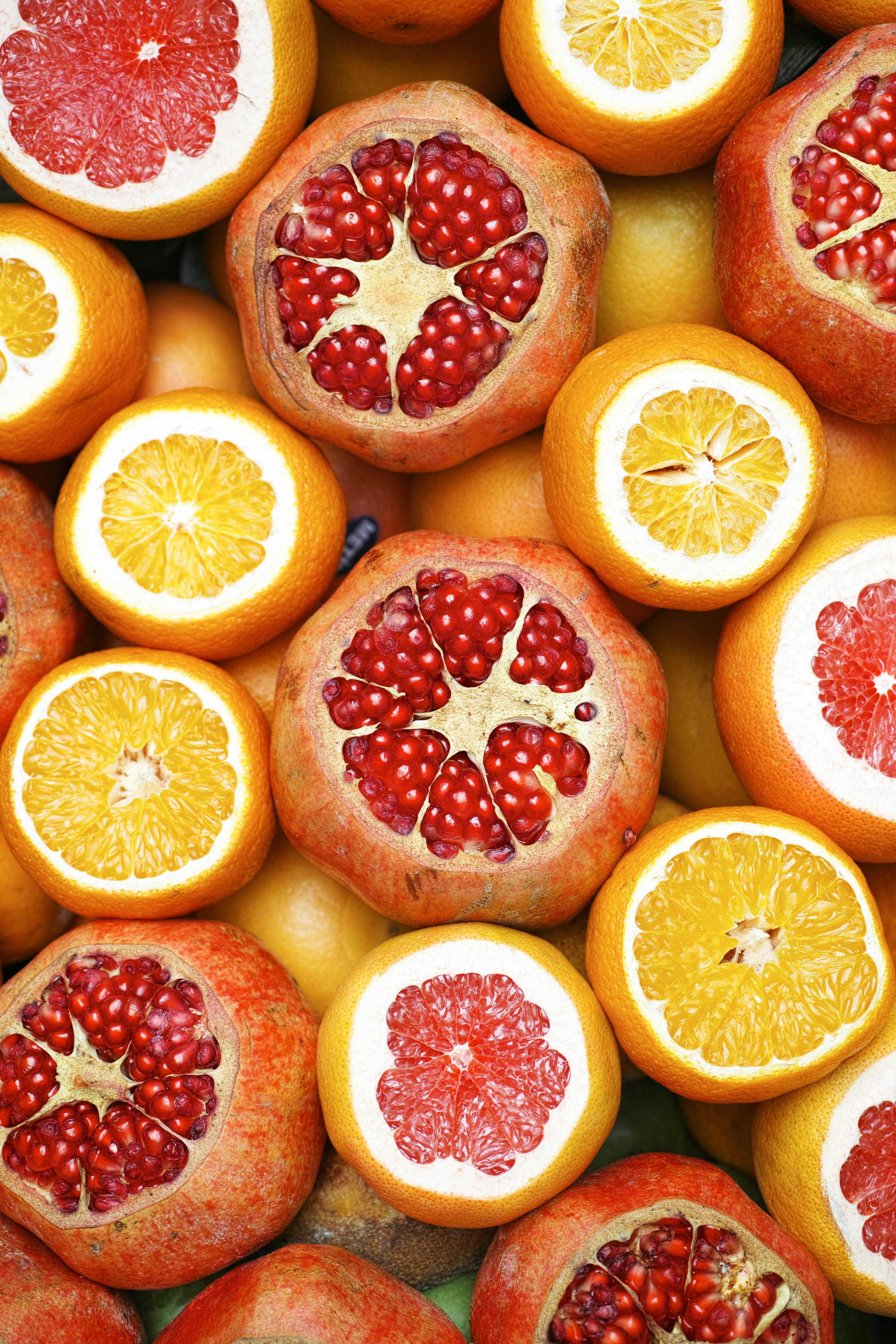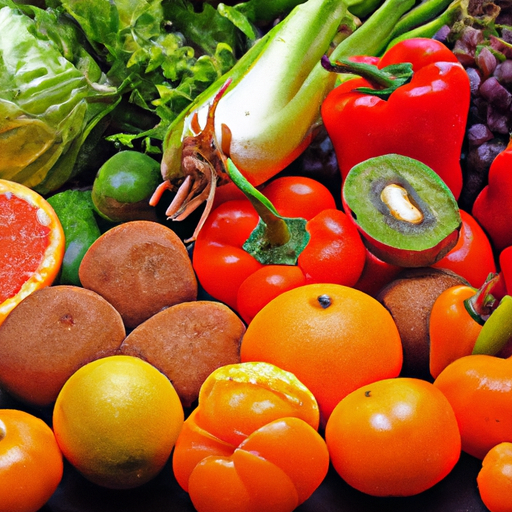Take charge of your digestive health with Tastepan’s “The Power of Fiber: A Digestive Health Guide.” This comprehensive guide offers invaluable insights, tips, and tricks to help you prioritize your well-being. With a focus on nutritious and delicious recipes, dietary advice, and expert tips, this guide empowers you to nourish your body without compromising on taste. Whether you’re looking to improve your digestion, boost your energy levels, or simply make healthier choices, Tastepan has got you covered. Explore the power of fiber and embark on a journey towards better digestive health today.

The Importance of Fiber
Why is Fiber Important for Digestive Health?
When it comes to maintaining good digestive health, fiber plays a vital role. Fiber is a type of carbohydrate that cannot be digested by the body. Instead, it passes through the digestive system largely intact, providing a range of benefits along the way.
One of the main reasons fiber is important for digestive health is because it aids in preventing constipation. Fiber adds bulk to the stool, making it easier to pass through the intestines. This can help to prevent the discomfort and straining associated with constipation.
How Much Fiber Do You Need?
The amount of fiber you need each day varies depending on your age, sex, and overall health. The general recommendation for adults is to consume between 25 to 38 grams of fiber per day. However, it is important to note that most people fall short of this recommended intake.
To ensure you are getting enough fiber in your diet, it is important to include a variety of high-fiber foods in your meals and snacks.
Types of Fiber
There are three main types of fiber: soluble fiber, insoluble fiber, and resistant starch. Each of these types of fiber has different effects on the digestive system.
Soluble fiber dissolves in water and forms a gel-like substance in the digestive tract. This type of fiber helps to slow digestion and can lower cholesterol levels. Good sources of soluble fiber include oats, barley, fruits, and vegetables.
Insoluble fiber, on the other hand, does not dissolve in water. It adds bulk to the stool and helps to promote regular bowel movements. Foods rich in insoluble fiber include whole wheat products, bran, and many vegetables.
Resistant starch is a type of fiber that is not digested in the small intestine. Instead, it reaches the colon where it is fermented by bacteria. Resistant starch can have beneficial effects on gut health as it promotes the growth of beneficial bacteria. Foods that contain resistant starch include green bananas, legumes, and cooked and cooled potatoes.
Benefits of Fiber for Digestive Health
Prevents Constipation
One of the key benefits of fiber for digestive health is its ability to prevent constipation. When you consume adequate amounts of fiber, it adds bulk to the stool, making it easier to pass through the digestive system. This can help to prevent the discomfort and straining associated with constipation.
Promotes Regular Bowel Movements
In addition to preventing constipation, fiber also helps to promote regular bowel movements. Insoluble fiber, in particular, adds bulk to the stool and stimulates the muscles of the digestive tract, helping to move waste through the system. Regular bowel movements are important for overall digestive health and can help to reduce the risk of developing certain conditions, such as diverticulosis.
Reduces the Risk of Hemorrhoids
Hemorrhoids are swollen blood vessels in the rectum and anus that can cause pain and discomfort. A lack of fiber in the diet can contribute to the development of hemorrhoids, as it can lead to constipation and straining during bowel movements. By including fiber-rich foods in your diet, you can help to prevent constipation and reduce the risk of hemorrhoids.
Supports a Healthy Gut Microbiome
The gut microbiome refers to the trillions of bacteria that live in your digestive system. These bacteria play a crucial role in maintaining good digestive health. Fiber acts as a prebiotic, providing nourishment for the beneficial bacteria in the gut. By consuming fiber-rich foods, you can support a healthy gut microbiome, which is important for overall digestive health.

Sources of Fiber
Whole Grains
Whole grains are an excellent source of fiber. Examples of whole grains include oats, brown rice, quinoa, and whole wheat bread and pasta. When choosing grains, opt for whole grain varieties over refined grains, as they retain the bran and germ, which are rich in fiber and nutrients.
Fruits and Vegetables
Fruits and vegetables are naturally rich in fiber. They also provide a wide range of essential vitamins, minerals, and antioxidants. Some fruits and vegetables that are particularly high in fiber include berries, apples, oranges, broccoli, and carrots. Aim to include a variety of fruits and vegetables in your diet to ensure you are getting a good mix of both soluble and insoluble fiber.
Legumes and Lentils
Legumes, such as beans and lentils, are an excellent source of fiber. They are also rich in protein, making them a great option for vegetarians and vegans. Legumes can be added to soups, stews, salads, and even used to make dips and spreads.
Nuts and Seeds
Nuts and seeds not only provide a good dose of healthy fats and protein, but they also contain fiber. Almonds, chia seeds, flaxseeds, and sunflower seeds are all excellent sources of fiber. They can be enjoyed as a snack, sprinkled on top of salads or oatmeal, or used in baking.
Fiber Supplements
If you find it challenging to get the recommended amount of fiber from food alone, fiber supplements can be a useful addition to your daily routine. These supplements come in various forms, including powders and capsules, and can help to boost your fiber intake. It is important to remember, however, that whole foods should always be your first choice for obtaining nutrients, including fiber.
Different Types of Fiber and Their Effects
Soluble Fiber
Soluble fiber dissolves in water and forms a gel-like substance in the digestive tract. This gel-like substance helps to slow down digestion, leading to a slower release of sugars into the bloodstream. Soluble fiber can also help to lower cholesterol levels by binding to cholesterol in the digestive system and preventing its absorption into the bloodstream.
Insoluble Fiber
Unlike soluble fiber, insoluble fiber does not dissolve in water. It adds bulk to the stool, aiding in regular bowel movements and preventing constipation. Insoluble fiber also helps to sweep waste through the digestive system and can contribute to a feeling of fullness after a meal.
Resistant Starch
Resistant starch is a type of fiber that is not digested in the small intestine. Instead, it passes into the colon where it is fermented by bacteria. This fermentation process produces beneficial compounds, such as short-chain fatty acids, that nourish the cells in the colon and contribute to overall gut health. Resistant starch is found in foods like green bananas, legumes, and cooked and cooled potatoes.

Tips for Increasing Fiber Intake
Gradually Increase Fiber Intake
When increasing your fiber intake, it is important to do so gradually. A sudden increase in fiber can lead to digestive discomfort, such as bloating and gas. Start by adding small amounts of fiber to your meals and gradually increase the portion sizes over time. This allows your digestive system to adjust to the change.
Drink Plenty of Water
Fiber absorbs water as it moves through the digestive system. To ensure optimal digestion, it is important to drink plenty of fluids, especially water, when consuming a high-fiber diet. Adequate hydration helps to soften the stool and prevent constipation.
Choose Whole Foods Over Processed Options
Processed foods often contain little to no fiber. To increase your fiber intake, focus on whole foods that are minimally processed. Whole grains, fruits, vegetables, legumes, and nuts and seeds are all excellent choices. These foods not only provide fiber but also offer a wide range of beneficial nutrients.
Include a Variety of Fiber-Rich Foods in Your Diet
Different fiber-rich foods provide different types of fiber. To ensure you are getting a good mix of soluble and insoluble fiber, aim to include a variety of high-fiber foods in your diet. This can include whole grains, fruits, vegetables, legumes, nuts, and seeds.
Cooking and Preparation Tips
Cooking and preparing high-fiber foods can help to make them more appealing and easier to consume. For example, roasting vegetables brings out their natural sweetness and can make them more enjoyable to eat. Incorporating fiber-rich foods into recipes, such as adding beans to soups or chia seeds to smoothies, can also be a tasty way to increase your fiber intake.
Fiber and Weight Management
How Fiber Promotes Weight Loss
Fiber can be a valuable tool for weight management. Since high-fiber foods tend to be more filling, they can help to suppress appetite and promote feelings of satiety. Additionally, fiber-rich foods are generally lower in calories, allowing you to consume larger portions without exceeding your calorie goals. By incorporating fiber-rich foods into your meals and snacks, you can support your weight loss efforts.
Fiber-Rich Foods that Aid in Weight Management
Certain fiber-rich foods are particularly beneficial for weight management. Fruits and vegetables are low in calories and high in fiber, making them great choices for weight loss. Legumes, such as beans and lentils, are also rich in fiber and protein, making them filling and satisfying. Whole grains, like oats and quinoa, provide a good dose of fiber and can help to keep you feeling full for longer.
Fiber and Gut Health
How Fiber Supports a Healthy Gut
Fiber plays a crucial role in supporting a healthy gut. As it moves through the digestive system, fiber acts as a prebiotic, providing nourishment for the beneficial bacteria in the gut. These bacteria help to break down fiber, producing short-chain fatty acids that nourish the cells of the colon. This process contributes to a healthy gut environment and can help to reduce the risk of gastrointestinal diseases.
Prebiotic Fibers and Their Benefits
Certain types of fiber, known as prebiotic fibers, are particularly beneficial for gut health. Prebiotics are non-digestible carbohydrates that stimulate the growth and activity of beneficial bacteria in the gut. Examples of prebiotic fibers include inulin, oligosaccharides, and resistant starch. By including prebiotic-rich foods in your diet, such as onions, garlic, bananas, and legumes, you can support a healthy gut microbiome.
Fiber for Heart Health
The Role of Fiber in Lowering Cholesterol Levels
Fiber, particularly soluble fiber, can help to lower cholesterol levels. Soluble fiber binds to cholesterol in the digestive system, preventing its absorption into the bloodstream. This can lead to a decrease in LDL cholesterol levels, also known as “bad” cholesterol. By incorporating fiber-rich foods into your diet, you can promote heart health and reduce the risk of heart disease.
Fiber-Rich Foods that Promote Heart Health
Many fiber-rich foods have been shown to promote heart health. Oats, for example, are particularly effective in lowering cholesterol levels due to their high soluble fiber content. Other good options include fruits like apples and citrus fruits, as well as vegetables like Brussels sprouts and okra. Consuming a variety of fiber-rich foods can help to support a healthy cardiovascular system.
Overcoming Common Challenges of Increasing Fiber Intake
Digestive Discomfort
When increasing your fiber intake, you may experience some digestive discomfort at first. This can include symptoms such as bloating, gas, and abdominal discomfort. To minimize these symptoms, it is important to gradually increase your fiber intake and drink plenty of water. Chewing your food thoroughly and eating smaller, more frequent meals can also help to ease digestive discomfort.
Gas and Bloating
Increased fiber intake can sometimes lead to an increase in gas and bloating. This is because the bacteria in the gut produce gas as they ferment fiber. To minimize gas and bloating, it is important to drink plenty of water, chew your food thoroughly, and gradually increase your fiber intake. Over time, your digestive system will adjust to the higher fiber intake, and these symptoms should decrease.
Tips for Easing into a High-Fiber Diet
If you are new to incorporating fiber into your diet or have experienced digestive discomfort in the past, there are several tips that can help ease the transition. Start by increasing your fiber intake gradually, allowing your body time to adjust. Be sure to drink plenty of water throughout the day to help soften the stool and prevent constipation. Lastly, consider cooking and preparing high-fiber foods in ways that make them more enjoyable, such as roasting vegetables or adding beans to flavorful dishes.
Conclusion
The transformative power of fiber for digestive health is undeniable. From preventing constipation to supporting a healthy gut microbiome, fiber plays a crucial role in maintaining optimal digestive function. By incorporating a variety of high-fiber foods into your diet, you can reap the many benefits that fiber has to offer. So prioritize your digestive health today by adding fiber-rich foods to your meals and snacks. Your gut will thank you!

